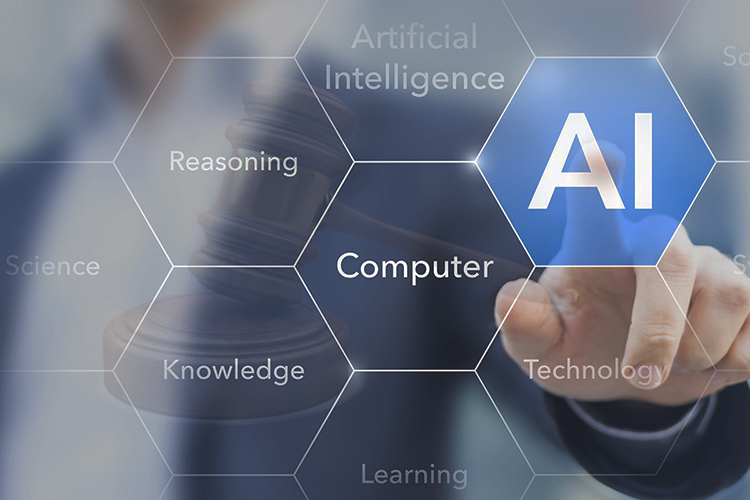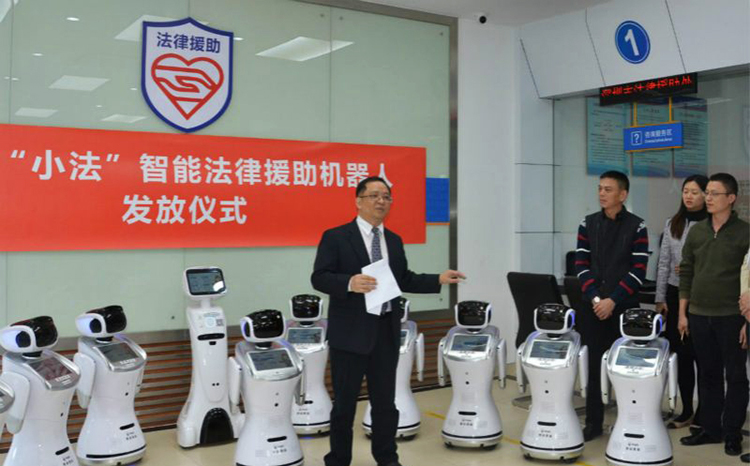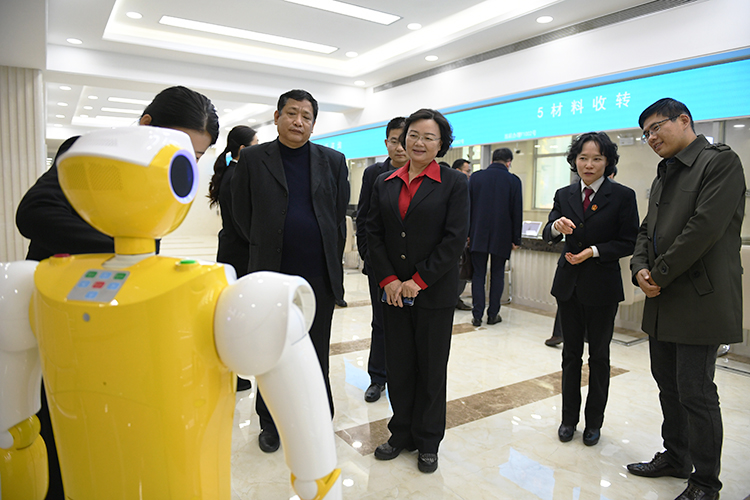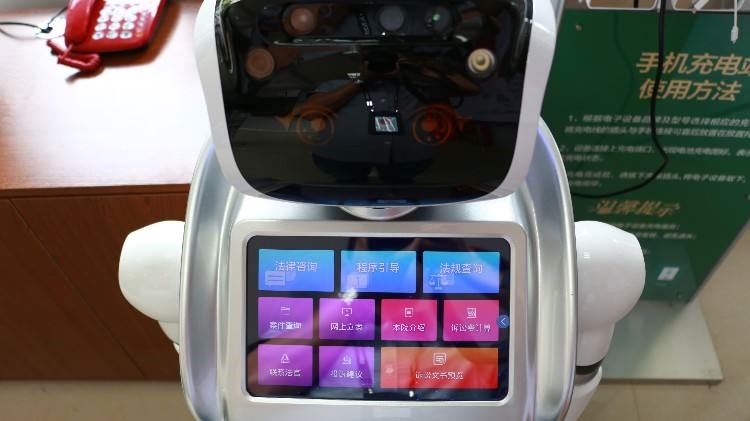2017 is about to end, and this year is being called the "First Year of Technological Justice". The Sanbot robots were glad to be a part of this new development. Throughout the year, this robot has been introduced to work for a large number of courts, judicial institutions, and law offices in Beijing, Shenzhen, Zibo, Xiamen, Fuzhou, Foshan, Chengdu, and many other cities throughout China. The robots were given special names by the users like Xiaofa, Fa Xiaobao, Xiaolv, and more.

China’s government has been very impressed with Sanbot’s capabilities. In April and June, the Supreme People’s Court of the People’s Republic of China and the Supreme People’s Procuratorate of the People’s Republic of China each issued Speeding Up the Construction of the Wisdom Court and the 2017-2020 Guide to the Prosecution of Big Data. These documents advocate for the application of technology such as Big data and intelligent voice recognition in the judicial system, helping to popularize AI products to be used in litigation.
Another important driving force behind AI in the courts is the demand from citizens. According to the official statistics of the Supreme People’s Court of the People’s Republic of China, when the Chinese litigation registration system began working, the number of litigation cases has continued to rise since May 2015. But at the same time, the number of litigation personnel is reducing. This has lead to an unfortunate situation where there are more cases but fewer legal personnel. Standard technology is also lowering the efficiency of litigations services. To guarantee better and more efficient litigation services, several legal departments have begun to adopt new technologies.

Intellectual Court Platform in Shanghai
Nanjing Aegis, the robotic litigation service solution developer for Sanbot robot, told the media, “There are huge differences between the urban and rural areas in China. The main legal service resources are mainly in the large cities; the small and medium-sized cities have fewer and sometimes weaker legal services than the large metropolises. Also, the litigation consultant and service charges are too expensive for many citizens. The litigation service robot not only embodies the spirit of law and serves the people, but also helps free up legal personnel from basic and redundant work so they can devote more energy to work on more technical and difficult work. The application of litigation service robots is the future.”

Shenzhen Court Distributing Sanbot Elf Litigation Service Robots
Till now, most of the 100 practical cases of “Robot + Litigation service” are intelligent litigation enquires. For example, the Sanbot litigation service robot, which works for Beijing Fengtai District Judicial Bureau, has a deep knowledge and understanding of the law and will quickly provide answers to the procedures for marriage and family affairs, traffic accidents, intellectual property, employee disputes and business personnel, etc. It can also remember more than 30 million historical cases and the 5-million-word laws and regulations for the litigants’ reference. The advanced AI robot can also calculate the litigation charges, worker's compensation, traffic accident compensation, and more.

Personnel in Beijing Court experiencing Sanbot Max Litigation Service Robot
In addition to Sanbot’s legal service solution, some courts or companies have made further developments based on Sanbot robot’s autonomous mobile and video conversation functions, allowing the robots to guide people around the courthouse, provide guidance, and one-key assistant for business affairs.
In the future, the legal industry expects more from the litigation service robot. Litigation personnel want the AI service robots to be qualified with more functions:
A smarter “Cloud brain” for the robot to push the history cases;
Offer a uniformed standard of judgment;
Help non-legal experts understand the law and correct any inaccuracies and human-error;
The robot can automatically generate and review the litigation documents and court documents based on speech recognition, semantic analysis, and robot graphic recognition technologies.
The personnel are expecting the litigation service robots to handle all of the “standard functions” in the future.
The most popularized litigation service robot is the Sanbot series robots from QIHAN Technology. Both QIHAN’s Sanbot Elf and Sanbot Max intelligent robots have an open API and can be further developed to suit any particular work scenario, and both the robots are offering litigation services now.

The Vice President of QIHAN Technology, Ryan Wu, stated that this is just a beginning of the “judicial intellectualization” where robots offer litigation consultation services via voice recognition and human-robot interaction. The development of science and technology along with the cooperation between robot manufacturers, robotic solution operations, and justice departments will make litigation service robots more intelligent and better in reaction speed, intellectual deep learning, and have a better user experience. This will lead to an increase in the usage of these robots. In the future, the use of artificial intelligence to enhance the provision of legal services and courthouses will be very prominent.